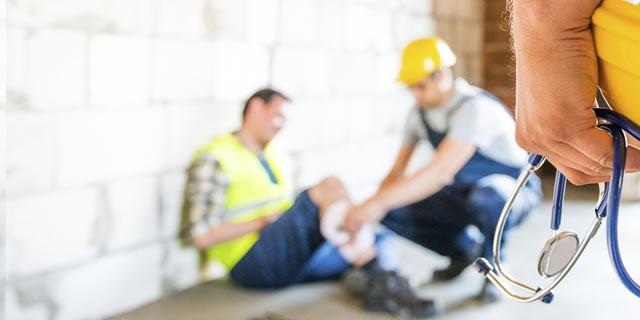Every industry is different and safety tips for work environments will vary according to the type of work and potential work-place injuries. As an example, if you do administrative and clerical work, then potential claims will be for ergonomic, back, and other office related accidents. But the farming and contrustion industries have very complex and dangerous work environments so these safety tips can really help. Incidents like falling from scaffolding or machinery injuries are very common.
In addition to the tips below, as your workers’ compensation insurance carrier we will be able to provide you with industry-specific safety pamphlets and tips to hand out to your staff.
Here are some safety tips for employers:
- Enforce safety procedures. Companies should also develop safety rules for their work place and their employees. OSHA requires employers to follow certain safety procedures so they are an excellent resource.
- Safety training for workers is critical. Make sure to review safety policies with employees regularly.
- Clean up spills and other potential hazards immediately.
- Do not allow employees to work to the point of overexertion. Regular breaks and a steady pace is preferable. Tired employess can lead to accidents and injuries.
- Make sure that adequate training on how to use tools and materials is done before employees start work.
- Training employees what to do in an emergency is also important.
- Listen to workers concerns about potentially hazardous processes and unsafe conditions.
- All employees and supervisors should follow all safety procedures without exception.
- A safety checklist that includes all potential hazards in your workplace is a great way for managers to discover potential hazards.
- Ergonomics can play an important role in preventing workplace injuries. Reducing repetitive motion disorders can help keep premiums at a minimum.
Here is a quick list of some important safety tips for your employees:
- Sit with your knees at a 90- to 120-degree angle while working at a computer. An angled foot rest can help reduce back strain.
- Make sure your ergonomic chair fits correctly and you take plenty of breaks.
- Lift with your knees not with your back when lifting heavy or awkward items. Always bend your hips and knees and squat to pick a heavy objects. Make sure to keep your back straight and hold the object close to your body.
- Don't twist while lifting.
- If you must sit for long periods, take frequent breaks or work standing up.
- Exercise and focus on endurance and flexibility.
- Use the right tools and equipment. Tools with extension handles that let you stand up rather than stooping are a huge advantage at staying safe.
- Use a lift to raise yourself so you are closer to the work. Overhead work is a recipe for an accident.
- Don't reach more than 10 inches away from your body when you pick up or set down a heavy item.
- Lift any heavy item using a solid two-handed grip.
- Many injuries at work occur when employees are tired. A steady pace is better than over working. Make sure to give your body and your mind time to rest.
Hopefully these safety tips for work will help you avoid claims.
Give us a call or shoot us an email if you would like an industry specific set of safety tips for your work environment.

